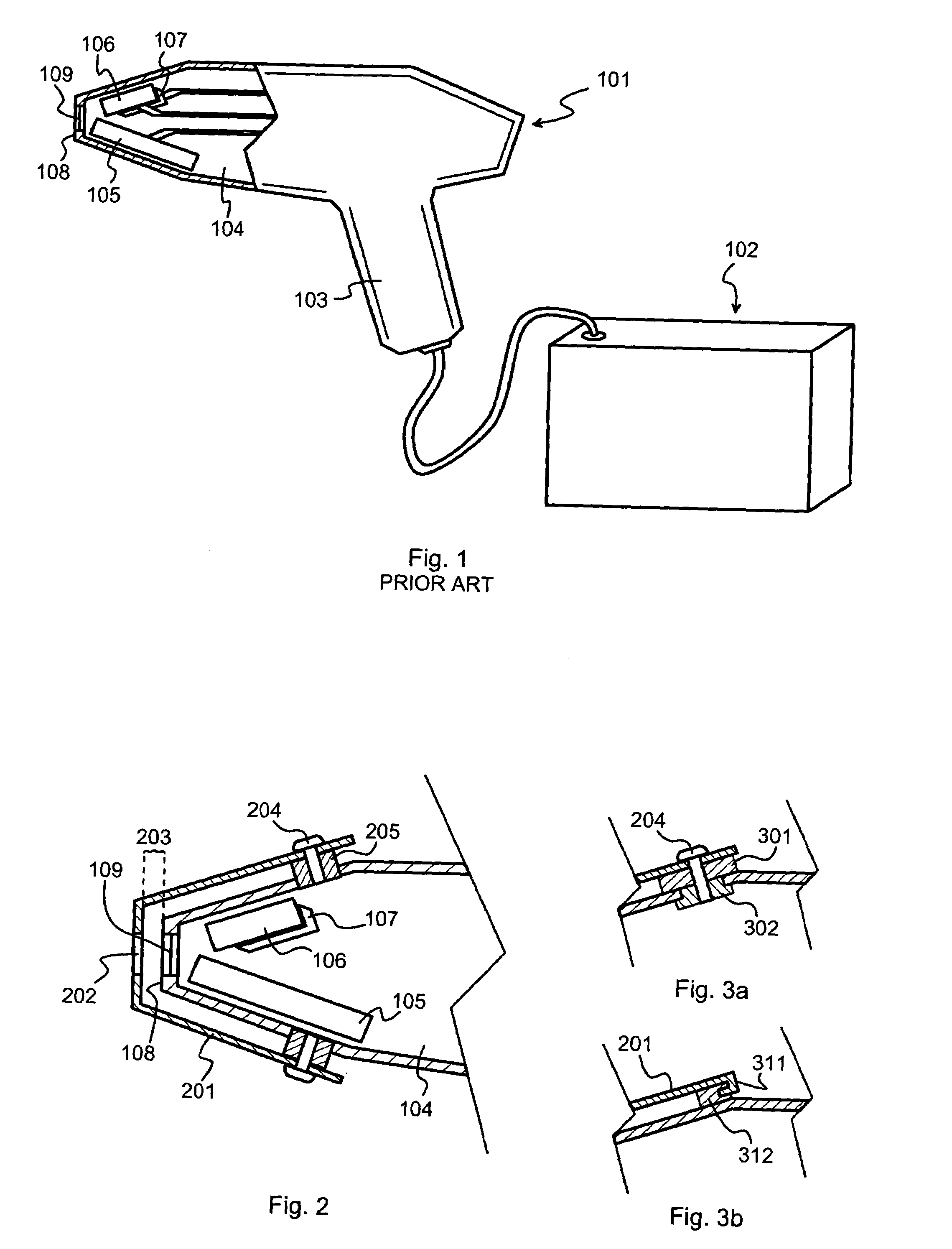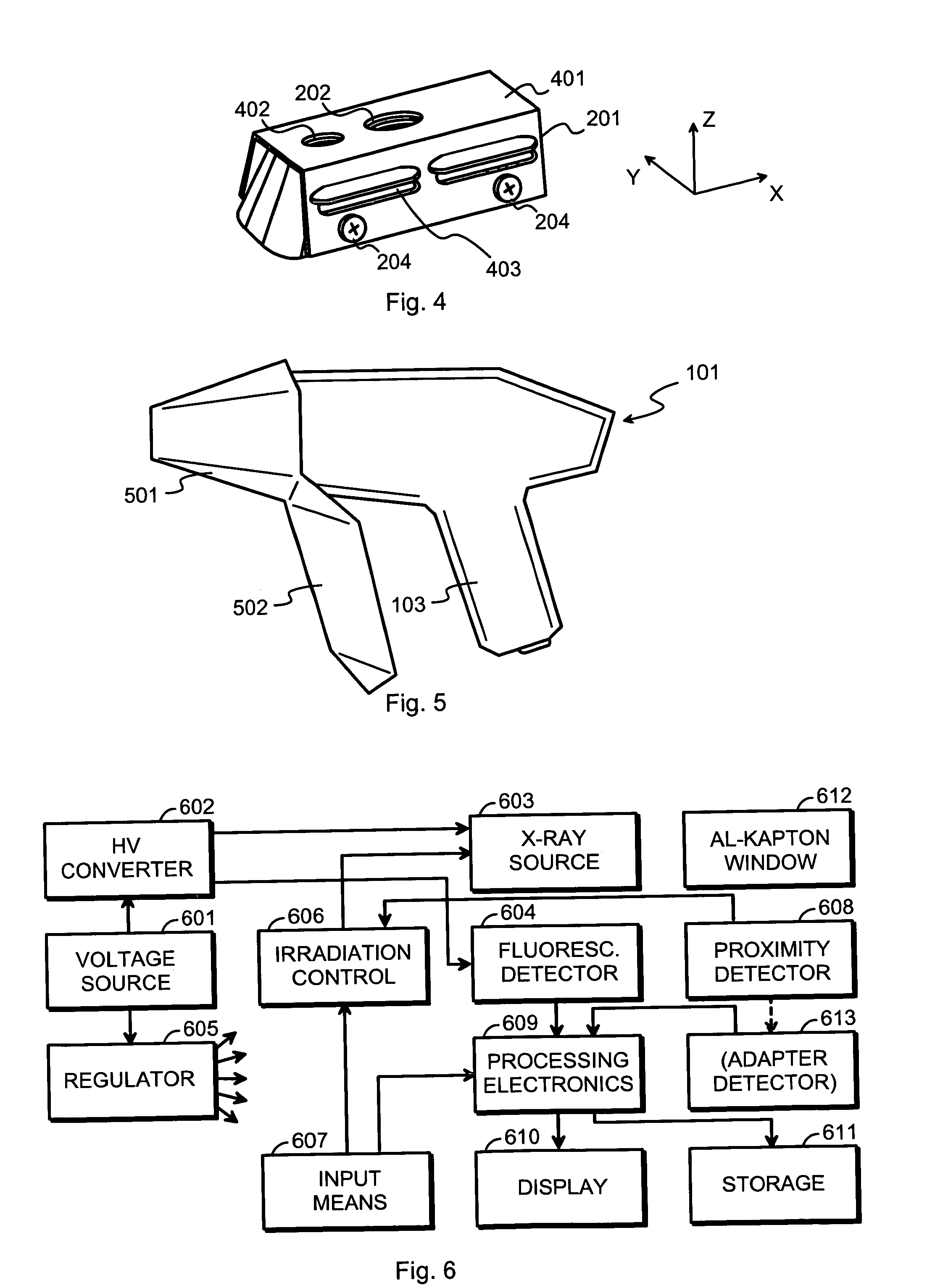Adapter and analyzer device for performing X-ray fluorescence analysis on hot surfaces
a technology of fluorescence analysis and analyzer, which is applied in the direction of instruments, radiation measurement, x-ray apparatus, etc., can solve the problems of inability to provide reliable results, unattractive obvious solution, and relatively low efficiency of thermoelectric cooling, etc., to achieve low thermal conductivity, improve thermal bridge, and look sleek
- Summary
- Abstract
- Description
- Claims
- Application Information
AI Technical Summary
Benefits of technology
Problems solved by technology
Method used
Image
Examples
Embodiment Construction
[0025]FIG. 2 is a partial cut-out diagram of a part of a portable X-ray fluorescence analyzer device equipped with an adapter according to an embodiment of the invention. The front part of the component compartment 104, as well as the X-ray source 105, detector 106 and cooling arrangement 107 are visible in the drawing. Supported in front of the front end 108 is an adapter 201, which is basically a sheet of material having certain advantageous qualities such as low thermal conductivity, bent to a three-dimensional shape in which is roughly follows the form of those parts of the analyzer device it covers. A hole 202 in the adapter coincides with the window 109 in the front end 108 of the analyzer device. A thermally insulating layer, which in the embodiment of FIG. 2 is an air gap 203 but which could also be a layer of a thermally insulating solid material, separates the adapter 201 from the front end 108 of the measurement head. In this exemplary embodiment the thickness of said the...
PUM
| Property | Measurement | Unit |
|---|---|---|
| temperatures | aaaaa | aaaaa |
| thickness | aaaaa | aaaaa |
| surface temperature | aaaaa | aaaaa |
Abstract
Description
Claims
Application Information
 Login to View More
Login to View More - R&D
- Intellectual Property
- Life Sciences
- Materials
- Tech Scout
- Unparalleled Data Quality
- Higher Quality Content
- 60% Fewer Hallucinations
Browse by: Latest US Patents, China's latest patents, Technical Efficacy Thesaurus, Application Domain, Technology Topic, Popular Technical Reports.
© 2025 PatSnap. All rights reserved.Legal|Privacy policy|Modern Slavery Act Transparency Statement|Sitemap|About US| Contact US: help@patsnap.com



